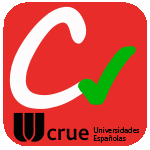| dc.contributor.advisor | VALIORGUE, M. F. | |
| dc.contributor.advisor | ARRAZOLA, PEDRO JOSE | |
| dc.contributor.advisor | SALVATORE, M. F. | |
| dc.contributor.author | Baeza, Chloé | |
| dc.date.accessioned | 2025-04-16T09:28:30Z | |
| dc.date.available | 2025-04-16T09:28:30Z | |
| dc.date.issued | 2024 | |
| dc.date.submitted | 2024-12-06 | |
| dc.identifier.other | https://katalogoa.mondragon.edu/janium-bin/janium_login_opac.pl?find&ficha_no=186741 | |
| dc.identifier.uri | https://hdl.handle.net/20.500.11984/6970 | |
| dc.description.abstract | This work addresses the challenges posed by metallic additive manufacturing (MAM) processes, particularly in creating functional internal surfaces with complex geometries like conformal cooling channels. Despite their innovative potential, MAM surfaces produced via Laser Powder Bed Fusion (L-PBF) are inherently rough and non-functional as built. These surfaces, often inaccessible, require a post-processing technique that minimises geometric alterations while achieving superfinishing. In the project, Abrasive Flow Machining (AFM) was selected for this purpose. Given the complexity, high value, and low production volumes of MAM parts, this study focuses on understanding the mechanisms by which AFM interacts with rough, complex internal surfaces to optimise treatment conditions and predict surface evolution. In this aim, experimental methods were first developed to track surface topography changes under varying AFM parameters. By enhancing existing setups, surface evolution was monitored as a function of abrasive media properties and process parameters. Locally, the study examined the action mechanisms of abrasives, revealing how their size and concentration affect material removal. Then, at the macroscopic scale, a numerical model was developed using Arbitrary Lagrangian-Eulerian (ALE) simulations to describe the interaction between abrasive media flow (modelled as homogeneous) and the surface. This model provided local values such as sliding velocity and normal stress from macroscopic parameters like extrusion pressure and cycle number. Finally, to support these simulations, a method for characterising abrasive media rheology was devised, leveraging polymer rheology techniques and a plate-plate test. Results demonstrated that the highly charged polymer behaves as a suspension of solid particles in a Carreau-Yasuda fluid, sliding on the surface. These findings contribute to the precise optimisation of AFM for functionalising rough MAM surfaces. | en |
| dc.format.extent | 244 p. | en |
| dc.language.iso | eng | en |
| dc.publisher | Mondragon Unibertsitatea. Goi Eskola Politeknikoa | en |
| dc.rights | © Chloe Veronique Florence Baeza | en |
| dc.title | A numerical and experimental study of the mechanisms influencing the Abrasive Flow Machining (AFM), a surface finishing process | en |
| dc.type | http://purl.org/coar/resource_type/c_db06 | |
| dcterms.accessRights | http://purl.org/coar/access_right/c_abf2 | en |
| local.description.responsability | M. J. OUTEIRO (President); Mme H. PEREZ (Reviewer); M. C. TOURNIER (Reviewer); M. L. EXBRAYAT (Examiner) | es |
| local.identifier.doi | https://doi.org/10.48764/VM7T-KW75 | |
| oaire.format.mimetype | application/pdf | en |
| oaire.file | $DSPACE\assetstore | en |
| oaire.resourceType | http://purl.org/coar/resource_type/c_db06 | en |
| oaire.version | http://purl.org/coar/version/c_970fb48d4fbd8a85 | en |







